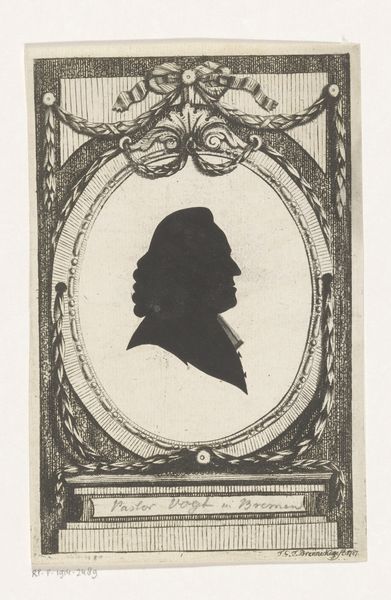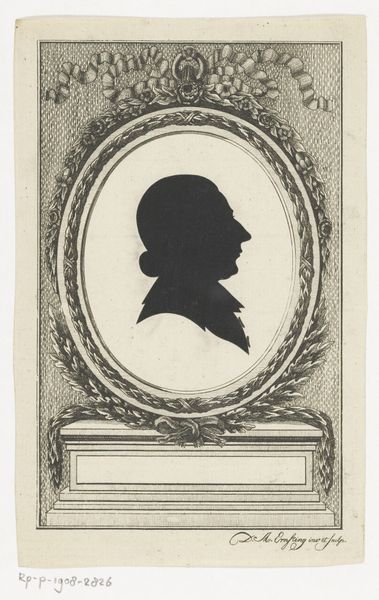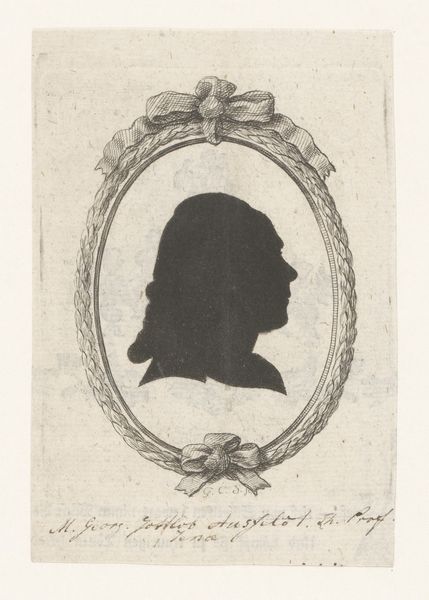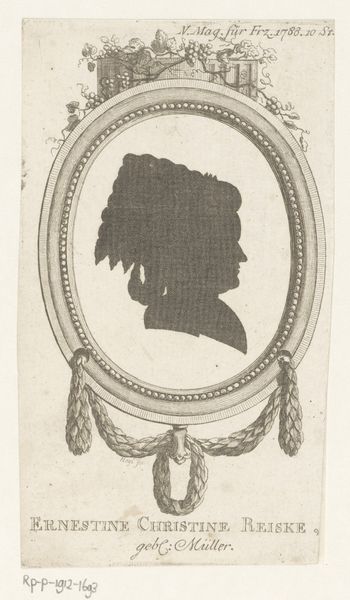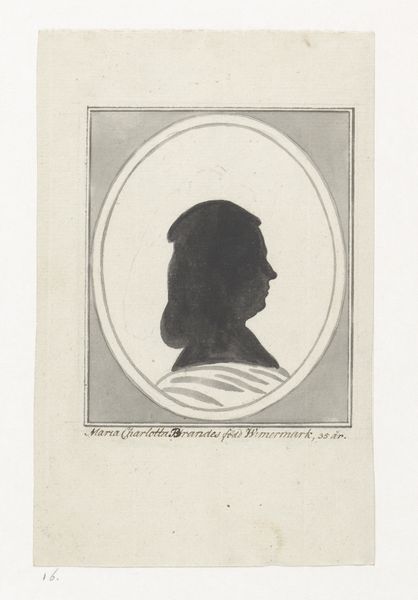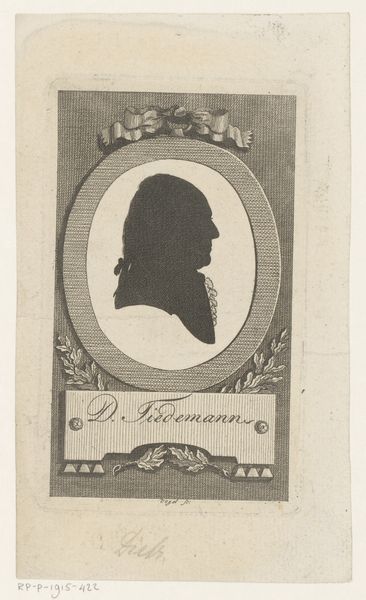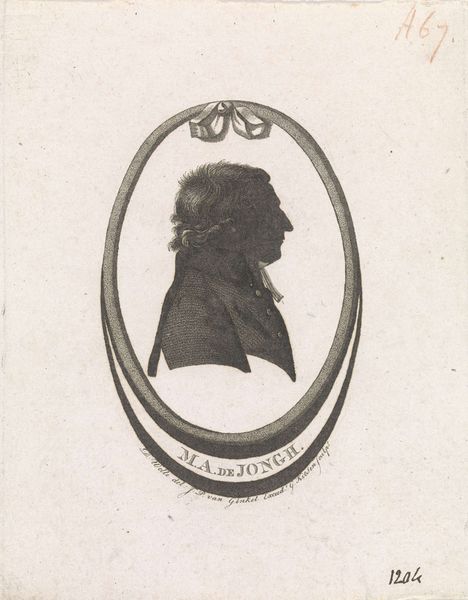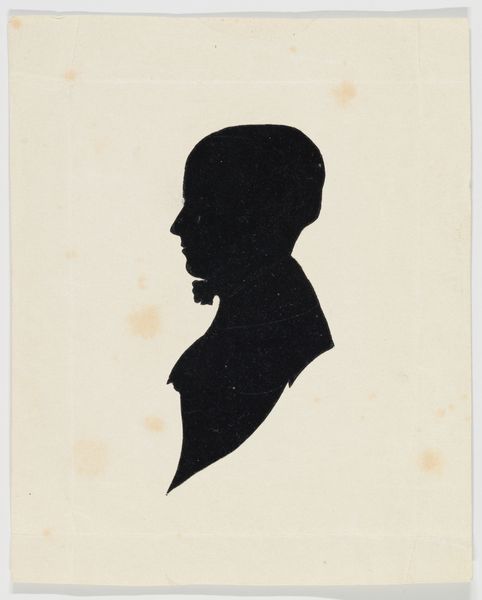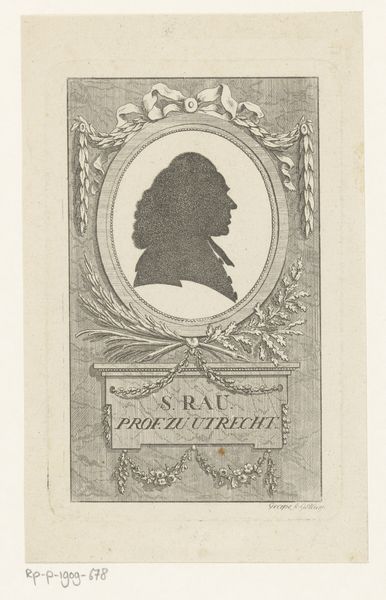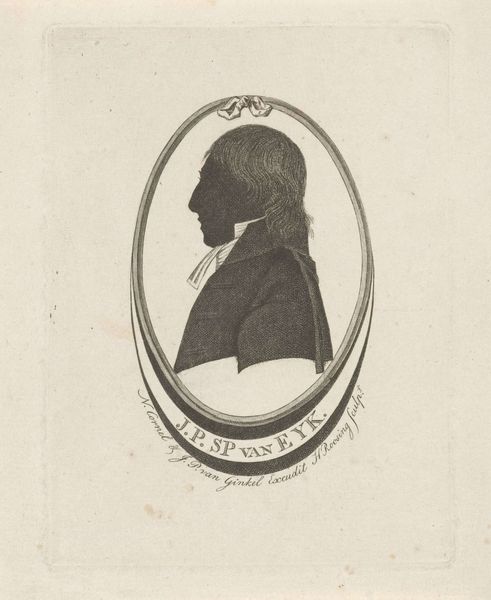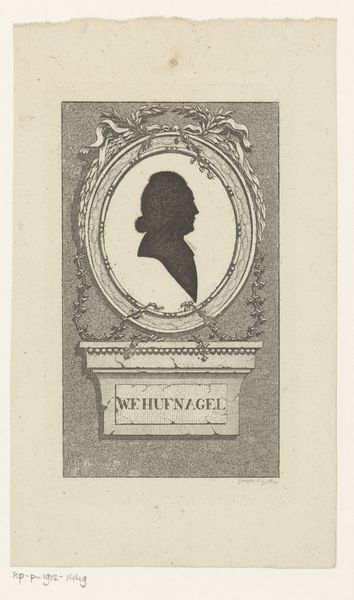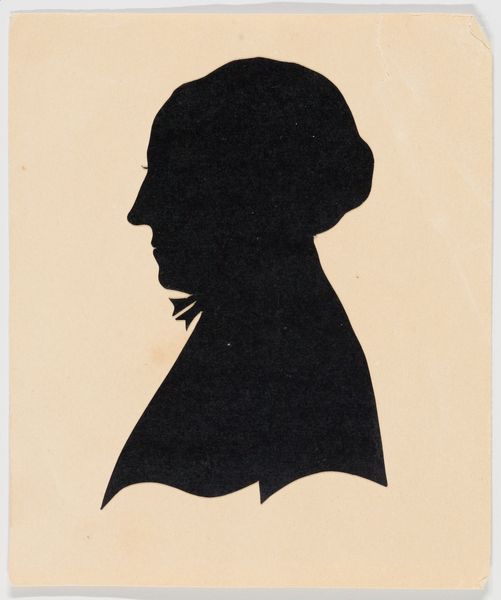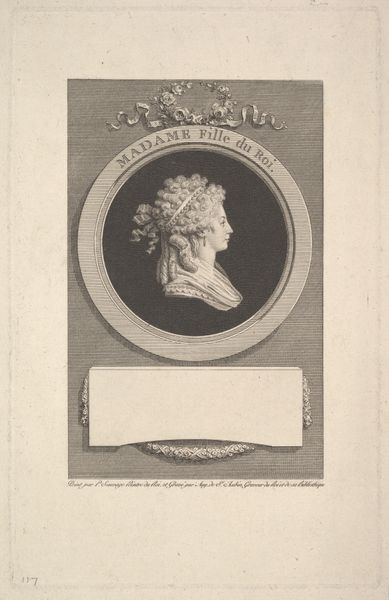
print, engraving
#
portrait
#
baroque
# print
#
engraving
Dimensions: height 136 mm, width 85 mm
Copyright: Rijks Museum: Open Domain
Editor: Here we have "Silhouetportret van Esdras Heinrich Mützenbecher," a portrait created in 1744. The piece, currently held at the Rijksmuseum, is an engraving. The silhouette is stark, framed quite elaborately with both ribbons and laurel. I find it quite formal, yet the details are really compelling. What catches your eye about it? Curator: The relationship between positive and negative space is particularly striking. Note how the stark black silhouette is not merely a void, but defined by a precise contour. The engraver’s skill lies in creating such a clear likeness through a limited vocabulary of forms. Consider also how the oval frame, adorned with the ribbon and laurel, both contains and elevates the portrait, adding a sense of controlled grandeur, in a baroque fashion. Editor: That tension between control and grandeur is a nice way to describe it! Do you think the limited colour palette adds to the feeling of formality? Curator: Precisely. The monochrome palette focuses our attention on form and line. The etching also draws our focus to the meticulous detail etched into the surrounding elements, intensifying the contrast with the flatness of the central silhouette. How does that contrast inform the message conveyed? Editor: It's as though the busyness surrounding the void elevates the subject, which also shows the artist’s impressive skillset. I'm definitely walking away with a richer understanding of this piece now! Curator: And I appreciate your keen observation on how a minimalist silhouette still expresses maximum visual information. Thank you for your insights.
Comments
No comments
Be the first to comment and join the conversation on the ultimate creative platform.
